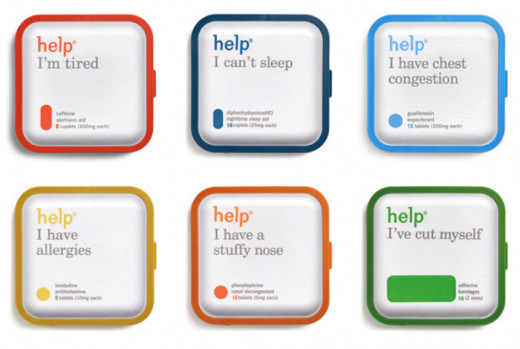Different Types of Medicine Packaging
It's unfortunately cold season—at least for me, and at the drugstore I found myself trying to pick out the best kind of medicine that would cure my symptoms. It occurred to me at that point that there's no standard way for companies to package their pharmaceuticals. When you get prescriptions, you usually get an orange bottle with a white lid, but for over the counter medication, there are several different options. It might sound a little picky, but it's a little frustrating how inconvenient some of the different packages are, and it got me to thinking about the pros and cons of each type, and why I prefer some types over others.

Over-the-Counter Medicine Bottles
Over the counter bottles are pretty efficient, there's no denying that. The biggest problems you could really have with these would be having trouble with the child-proof lid (which most adults don't, and most kids...well, that's sort of the point) or having trouble getting the foil seal off. Neither of those are really big issues, though. Plastic medicine bottles have tamper-evident features, which means that if someone's gotten into them before you have and compromised the safety of the pills, you'll know it—the foil seal will be gone, or the cotton filling at the top of the bottle will be missing. They aren't foolproof, but it's a good start, and keeping these in my medicine cabinet is easy and neat. They're also great because they can hold more pills than, say, blister packaging. I can pick up a bottle of 100 or even 500 tablets of medicine for headaches, whereas with blister packages I can only pick up maybe 24 tablets at a time. It's a convenience issue, here, but there's reason also for those blister packages I just mentioned.
Blister Packages in Cardboard Boxes
Though they're not my favorite storage method of medicine, cardboard boxes with sheets of blister-packaged pills are efficient in the sense that it's easy to tell how many you have left and it's easy to keep the pills from being tampered with. If the blister package is broken, not only will the pills likely be gone, but you'd definitely notice the package being compromised. I'm not the biggest fan of these, however. Sometimes the pills are difficult to get out of the blister pack, especially if they're sealed with both foil and paper. Also, there's no real way of sealing the box back up. The box flaps can be mildly irritating, but perhaps my biggest annoyance with blister-packaged medicine is that if you have to bring it somewhere, you can forget about that box ever fitting back into your medicine cabinet. The boxes obviously crush easily if you throw them into a bag or your pocket, and while it doesn't damage the pills, it's just not the best way to package medicine, in my opinion.
Eco-Friendly Packaging
One of the newer methods of packaging medicines involved "molded fiber." I found out about this after seeing small, clamshell-esque packages near the checkout lines, as though the pharmacy knew I was dissatisfied with the paper box option and would want to make a last minute switch. I switched out my decongestant and allergy medicine and instead picked up packages that have plastic edges and what's referred to as "molded fiber packaging" on the front and back. You may have seen the custom packaging from Help Remedies at your corner store or pharmacy too, but this was the first time I'd seen or heard of this brand. It's the same medicine, but their products come in eco-friendly packages. The front and back are made by molding a package either using it in conjunction with traditional petroleum-based (plastic) packaging or on its own. These little clamshells were thought up by a custom packaging company, Plastic Ingenuity. The packages not only meet pharmaceutical requirements, but they close up easily, unlike cardboard boxes, and are tamper-evident. These are also great because along the closed edge, there's a label that details what the medicine is used for rather than the drug's name—it's easy to find what I want when I open my medicine and see a row of boxes with simple labels. I simply grab the one that reads "aching body" when my back hurts after a long day of work, or the one that says "cut" when I need a bandaid.
It's hard to say if these will take over traditional methods of packaging medicines anytime soon, but I can't be the only one out there who hates having to twist bottles around when searching for the right one in the cabinet.



